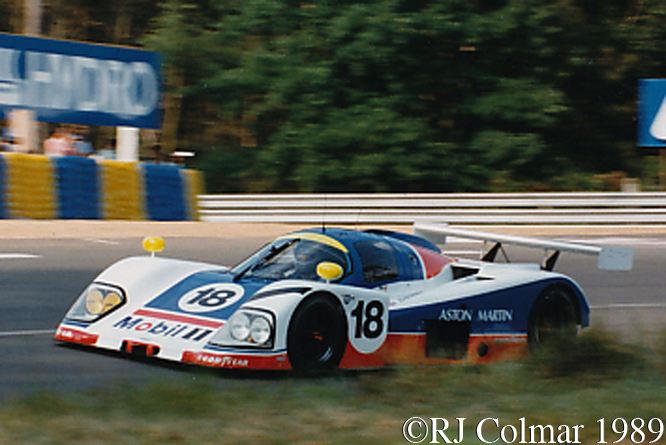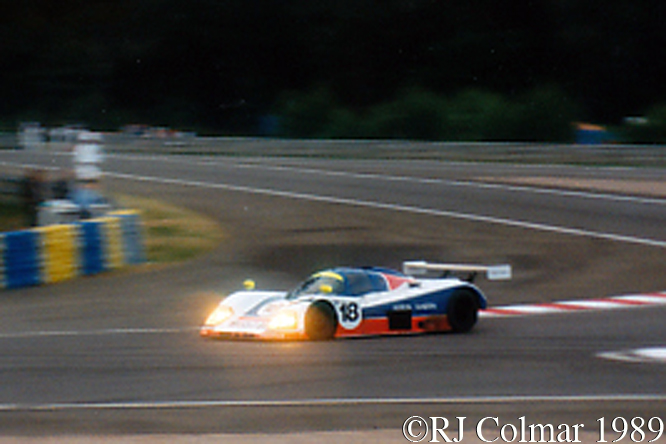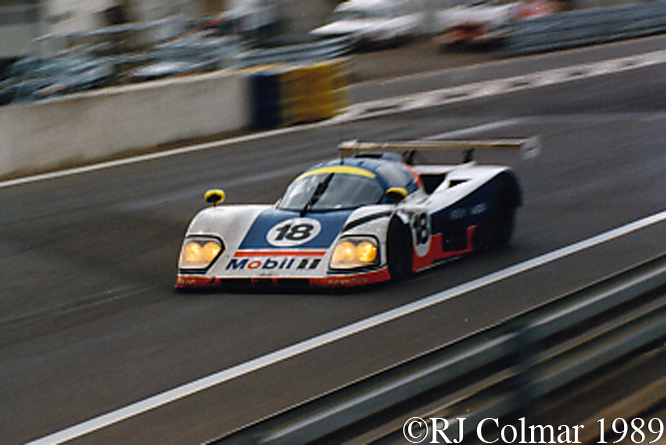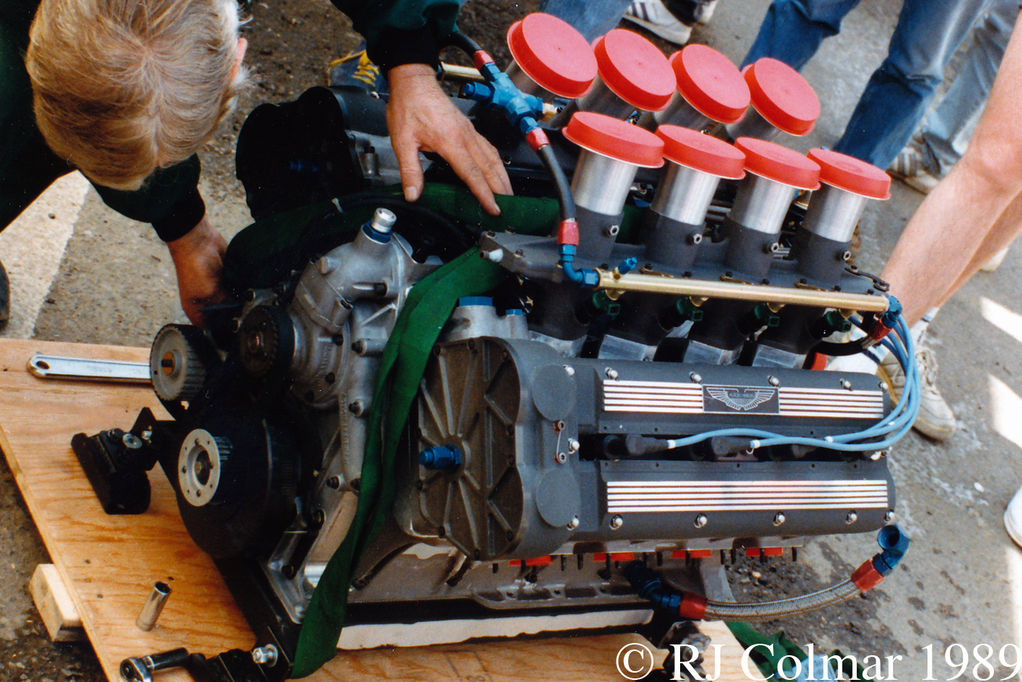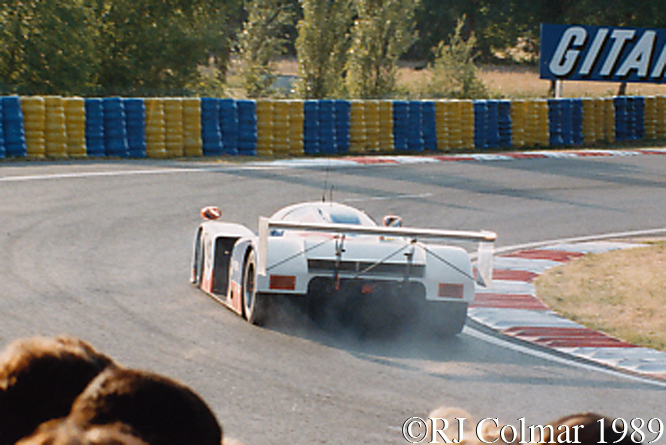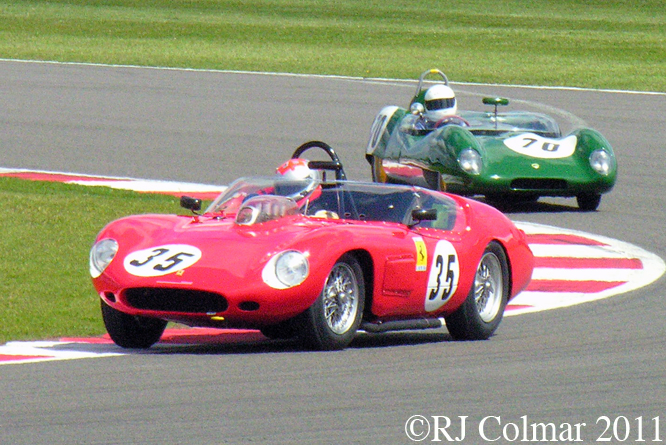According to the results available to me Don Devendorf a “scientist” at the Hughes Aircraft Corporation was campaigning a Triumph Spitfire and then Mueller Fabricators Triumph GT6 in the GP and EP SCCA classes with some success from 1968 to 1970.
By 1978 Don had founded Electramotive Engineering of California with John Knepp to prepare and successfully race a succession of Datsun’s.
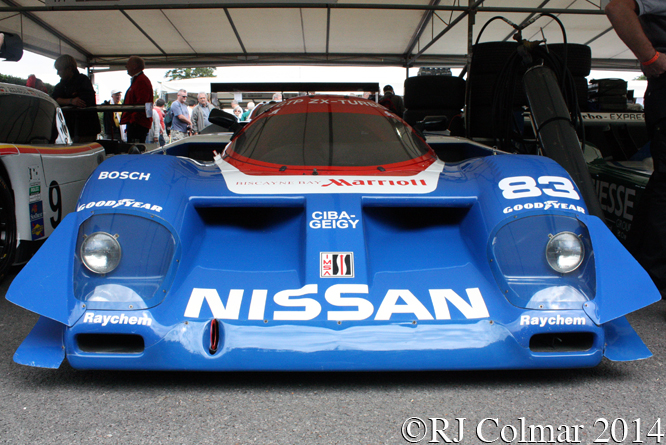
Starting with a IMSA GTU Class 240Z before moving onto GTU Class 280ZX and GTO Class 280ZX turbo models up until 1984.
In 1985 Nissan decided to drop the Datsun brand in favour of Nissan and entered into a partnership with Electramotive to field cars in the top GTP class of the IMSA series.
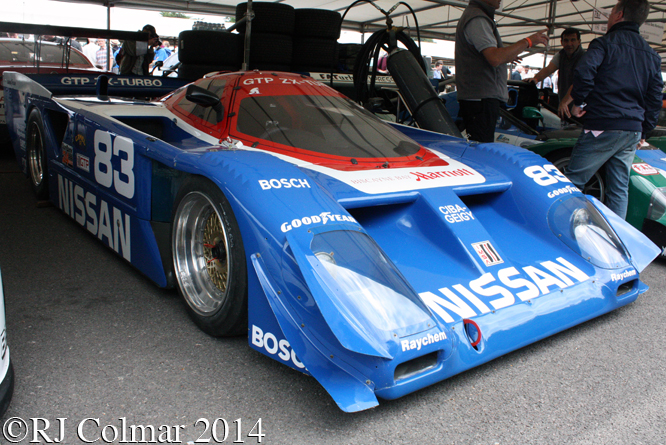
From 1985 Electramotive used Lola chassis similar to the Lola T710 chassis used by General Motors Corvette GTP team but adapted to take the Electramotive tuned turbocharged Nissan VG30 V6.
Initially the Nissan variant of the Lola T710 was known as the T810 in 1985, but for 1986 and 1987 the cars were known as Nissan GTP ZX-turbo’s with Lola T710 chassis numbers.
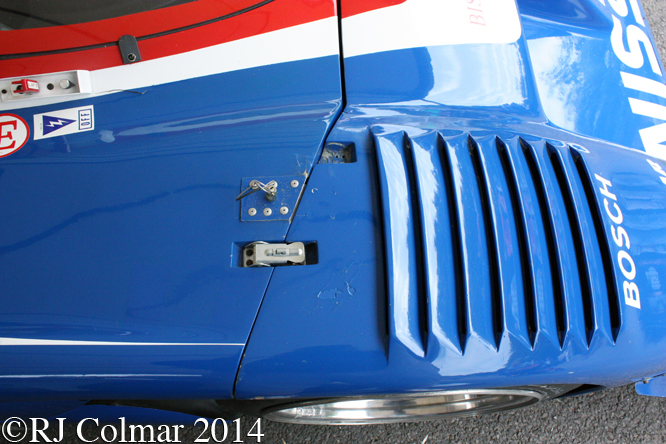
The Nissan Lola chassis carried bodywork devised by Yoshi Suzuka which was easily distinguished from the Hendricks Motorsports GTP Corvette body by the large front intakes mounted below the windscreen.
By 1987 the GTP ZX Turbo had been developed into one of the faster cars on the IMSA GTP circuit scoring 5 pole positions and one win with Geoff Brabham and Elliot Forbes-Robinson sharing the victory spoils at Miami.
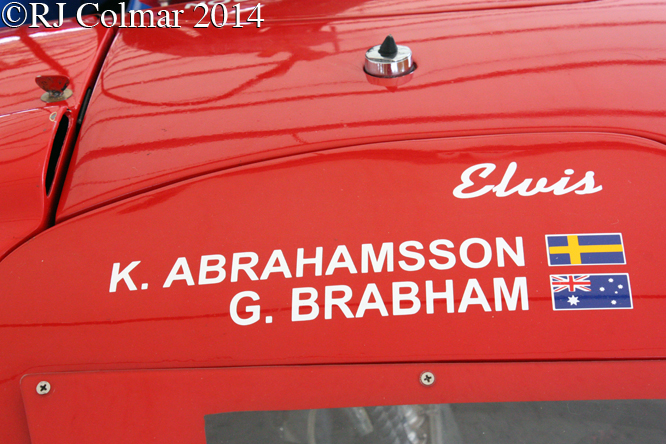
For 1988 Electramotive commissioned Trevor Harris to design the chassis for today’s featured car, #88-01 built by Jim Chapman’s JC Prototypes, using the same Electromotive alloy block motor and running gear as the ’87 GTP ZX-Turbo and similar Yoshi Suzuka designed bodywork.
After gifting the two endurance events at Daytona and Sebring to the new Castrol sponsored Jaguar team, by not entering them. Geoff Brabham won nine of the remaining events, with a season high streak of 8 consecutive wins to secure the 1988 drivers and team championships for the Electramotive team.
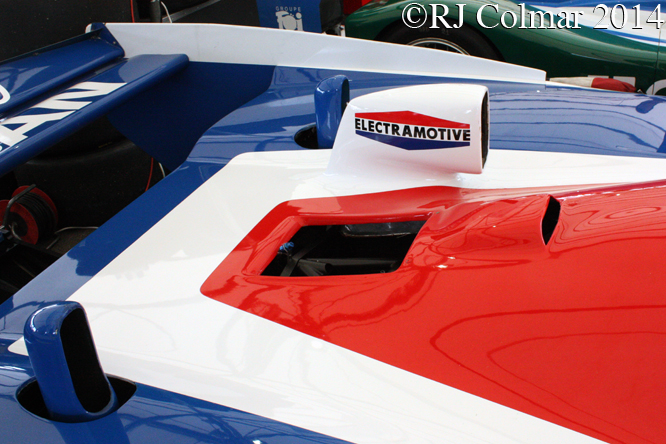
Chassis #88-01 was known as the King of the IMSA circuit and given the nickname Elvis, much of the success of the car was due to an electronically controlled turbocharger waste gate devised by John Knepp.
Four of Geoff’s wins were with John Moreton acting as co driver, they also scored a fifth non championship win together at Tampa in November 1988 and one more with Tom Gloy sharing the driving duties at Mid Ohio.
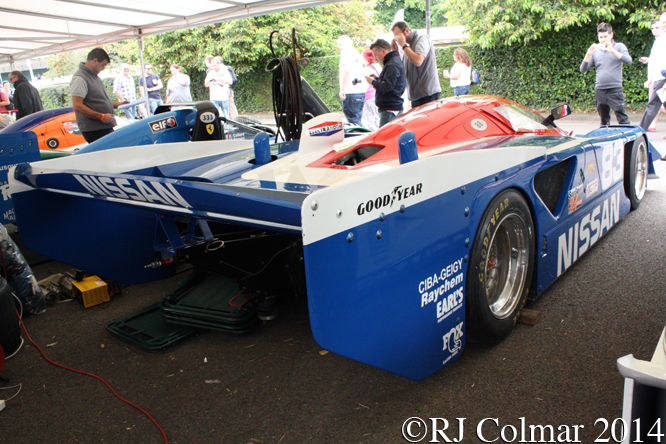
Surprisingly in 1989 Geoff Brabham drove #88-01 to a further seven victories to secure a second drivers title and team title for the Electramotive team, this included securing pole with Arie Luyendyk, Chip Robinson and Michael Roe for the Daytona 24 Hours where they failed to finish and winning the 1989 Sebring 12 Hours with Chip and Arie sharing the driving.
During the 1989 season Geoff and Chip shared #88-01 with team founder Don Devendorf to win at Miami and Atlanta and shared another two victories as a driving pair.
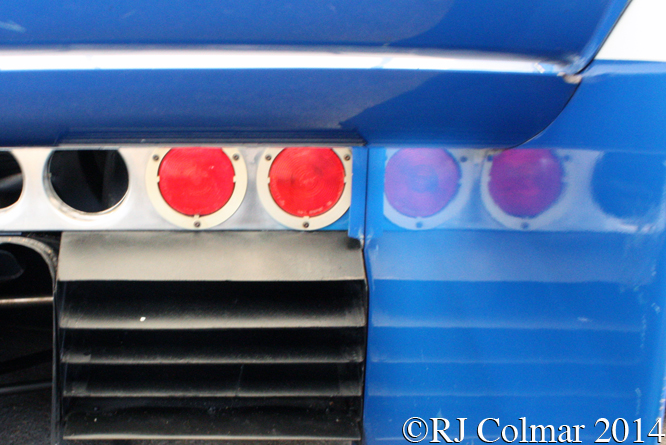
In 1990 Don sold Electramotive to Nissan and the team became Nissan Performance Technology Inc, NPTI. Elvis was wheeled out for it’s third and final season of competition and scored three more wins, including a second win at Sebring where Derek Daly and Bob Earl shared the driving. Derek and Geoff shared the driving to secure the chassis final two wins at West Palm Beach and Road Atlanta.
In all from 1988 Elvis made 32 starts, 16 from pole, finished 26 of those races and won 20 of them. Geoff went on to secure the 1990 IMSA GTP championship using a new twin turbo V6 NTP 90 chassis and the 1991 championship with a combination of a twin turbo V8 Nissan R90CK, twin turbo V6 NTP 90 and NTP 91 chassis.
Thanks for joining me on this IMSA King Elvis edition of “Gettin’ a li’l psycho on tyres” I hope you will join me again for Ferrari Friday tomorrow. Don’t forget to come back now !


